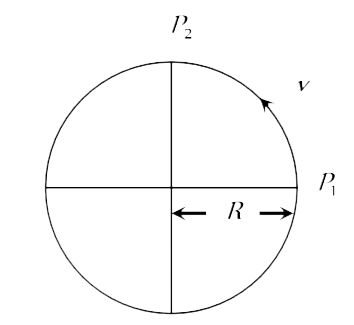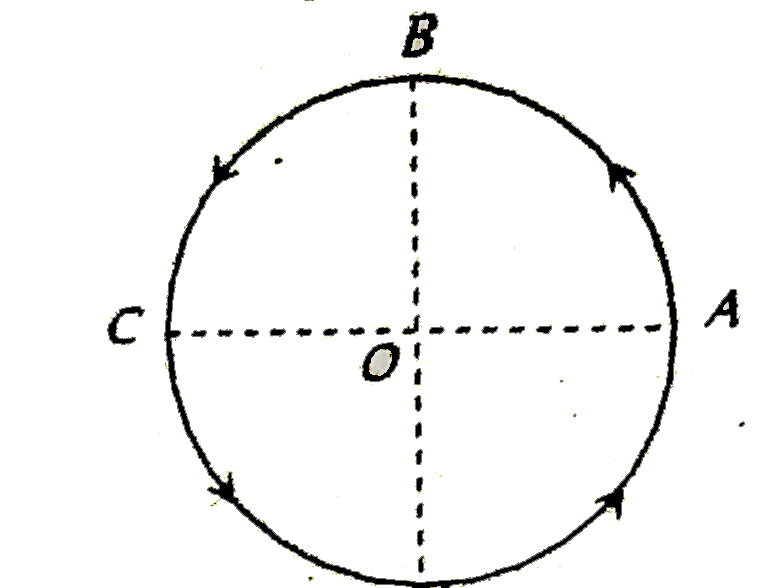Derive an expression for the acceleration of a body of mass m moving with a uniform speed v in circular path of radius r.
Let A = initial position of the body ,
B = position of the body after a small time interval t.
So, the angular displacement θ=∠AOB, is also small, and the displacement x effectively coincides with the arc AB of the circular path. Then,
Now at A, the velocity v is horizontal , at B, the velocity makes the same angle θ with the horizontal direction, keeping its magnitude v to be the same, as the body moves with a uniform speed v . Again, as θ is small, the change of velocity u, effectively coincides with a circular arc.
So, θ=uv
Then we get, xr=uv
or, u = vrx
Hence, the acceleration is,
a = change of velocitytime=ut=vxrt
= vrv=v2r
also shows that, as θ is small, u is normal to the velocity v. As v is tangential at every point on the circular path, the acceleration a is radial. This is centripetal acceleration of a uniform circular motion.

Topper's Solved these Questions
- CIRCULAR MOTIONBOOK - CHHAYA PUBLICATIONCHAPTER - CIRCULAR MOTIONEXERCISE - EXAMINATION ARCHIVE WITH SOLUTIONS (NEET)
2 Videos
- CALORIMETRYBOOK - CHHAYA PUBLICATIONCHAPTER - CALORIMETRYEXERCISE - EXAMINATION ARCHIVE
5 Videos
- DOPPLER EFFECT IN SOUND BOOK - CHHAYA PUBLICATIONCHAPTER - DOPPLER EFFECT IN SOUND EXERCISE - CBSE SCANNER
2 Videos
Similar Questions
Define centripetal acceleration. Derive anexpression for the centripetal acceleration of a particle moving with uniform speed v along a circular path of radius r. Discuss the direction of this acceleration
View SolutionDefine the term work and derive its SI unit. Write an expression for the kinetic energy of a body of mass m moving with a uniform speed v.
View Solution
Knowledge Check
Figure below shows a body of mass M moving with the uniform speed on a circular path of radius, R. What is the change in acceleration in going from P1 to P2
 AZeroBv2/2RC2v2/RDv2R×√2
AZeroBv2/2RC2v2/RDv2R×√2The acceleration of an object moving in a circle of radius R with uniform speed v is
Av2RBv22RC2v2RD3v22RFigure shows a body of mass m moving with a uniform speed v along a circle of radius r . The change in velocity in going from A to B is
 Av√2Bv/√2CvDZero
Av√2Bv/√2CvDZero
Obtain an expression for the centripetal force F acting on a particle of mass m moving with velocity v in a circle of radius r . Take dimensionless constant K = 1 .
View SolutionThe acceleration of an object moving in a circle of radius R with uniform speed v is
View SolutionA body of mass 1kg is moving with a uniform speed of 1m/s in a circular path of radius 1m. The external force acting on the body is
View SolutionThe angular acceleration of a particle moving along a circular path with uniform speed is
View SolutionThe angular acceleration of a particle moving along a circular path with uniform speed is
View Solution
